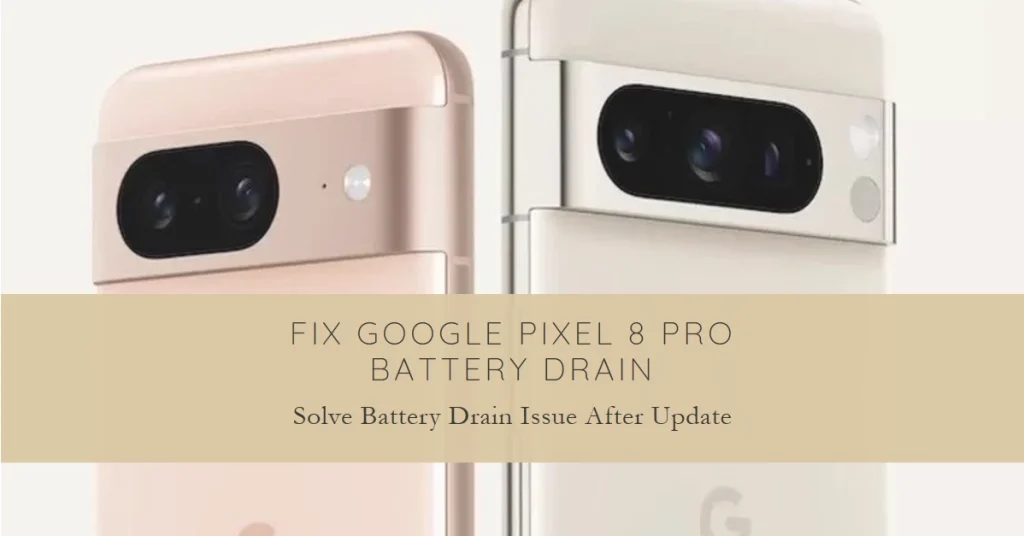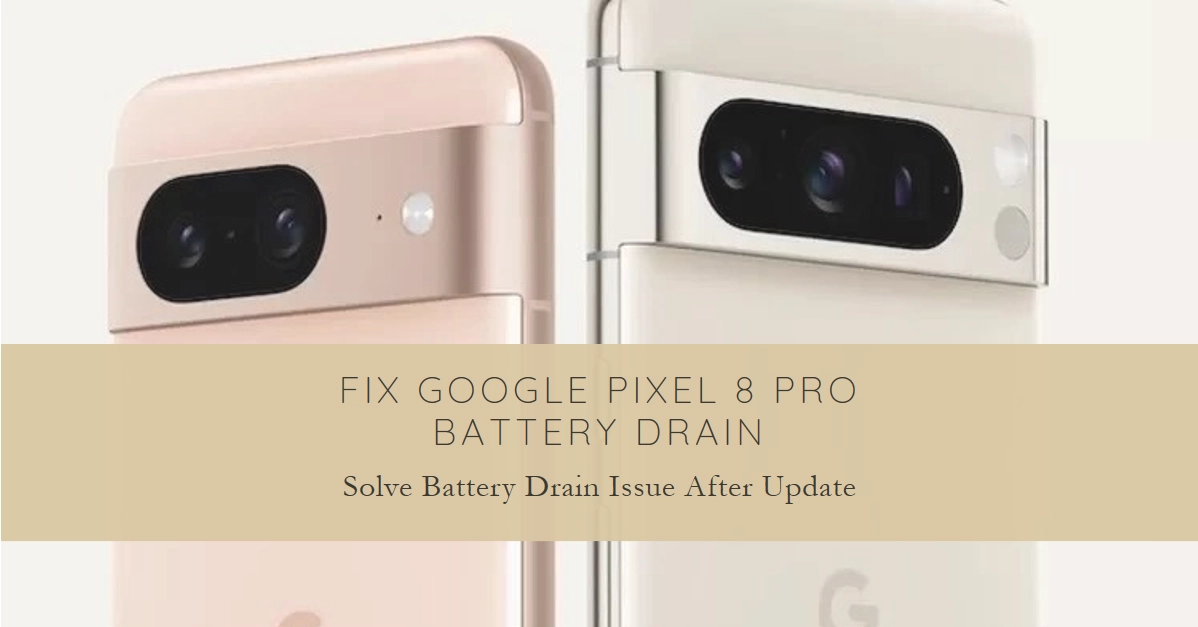Software updates are vital for optimizing your phone’s performance, patching security vulnerabilities, and introducing new features. However, updates can sometimes lead to unexpected side effects, including a quick-draining battery. If you’re facing this issue after a recent update on your Google Pixel 8 Pro, don’t worry.

This article offers a troubleshooting guide to resolve your battery issues and get your device back to its normal operational levels.
Problem Overview
Battery drain after updates is a common occurrence for numerous reasons. Software updates introduce behind-the-scenes changes that may lead to apps or services misbehaving.
Additionally, new features might place greater demand on your battery. Finally, sometimes glitches in the update itself can impact power management.
Identifying the Culprit
The first thing you have to do is to determine what’s draining your iPhone’s battery. Here’s how:
1. Check Battery Usage Stats
Your first step is to investigate which apps or services are eating up your battery:
- Open the Settings app on your Pixel 8 Pro.
- Navigate to Battery.
- Tap on Battery Usage.
- Observe the apps or services at the top of the list; these are your primary power consumers.
2. Restart Your Device
Although simple, a basic restart can often clear temporary glitches within the system caused by an update:
- Press and hold the Power button on your Pixel 8 Pro.
- Tap on Restart.
Managing Apps
To rule out glitching apps from the underlying cause, follow these steps:
1. Restrict Background Battery Usage
Here’s how to identify and control apps demanding power in the background:
- Locate an app showing high battery usage in your Battery Usage stats.
- Tap on the app’s name.
- Select Restrict to limit its background activity.
2. Force Stop Problematic Apps
If you suspect a specific app, try force-stopping it:
- In your Settings > Battery > Battery Usage list, find the app.
- Tap on the app and select Force Stop.
3. Clear App Cache
Clearing cached data can free up resources and address misbehavior:
- In your Settings > Battery > Battery Usage list, tap an app.
- Go to Storage.
- Tap on Clear Cache.
4. Uninstall Unused Apps
Old, unused apps may run in the background, impacting your battery. Uninstall unnecessary apps to minimize potential issues.
System Checks
If the battery draining problem continues, consider checking for new updates you can download and install.
1. Look for a New Software Update
Google typically releases bug fixes and patches promptly. Therefore, check if a new update is available:
- Go to Settings.
- Tap on System.
- Tap on System Update.
- If an update is available, select Download and Install.
2. Check for App Updates
Outdated apps may contribute to battery drain. Check the Play Store for app updates:
- Open the Play Store app.
- Tap on your profile icon in the top right corner.
- Select Manage apps & device.
- Tap Updates available.
- If you see relevant updates, select Update All or update apps individually.
Additional Troubleshooting
If the problem continues after performing prior solutions, here are your next options:
1. Disable Unused Features
Features like Always-on Display, Motion Sense, high-refresh-rate display mode, GPS, Bluetooth, and Wi-Fi scanning can all contribute to battery drain. Disable the ones you don’t use regularly.
2. Network and Connectivity
Weak cellular signal forces your phone to work harder to maintain a connection, draining the battery. Consider switching to Airplane Mode in areas with poor network coverage.
3. Factory Reset (Last Resort)
If nothing else solves the issue, a factory reset may be necessary. Remember to back up your data before proceeding:
- Go to Settings.
- Search for Factory Reset.
- Follow the on-screen instructions to finish the reset process.
After the reset, your device will restore to its factory state. By then, you can set everything as new.
Final Notes
By identifying battery-hungry apps, managing system settings, and keeping your software up-to-date, you should be able to restore your device’s battery life to its former glory. In the unlikely case that nothing else works, a factory reset can offer a fresh start.
And if that still doesn’t do any good, consider opting for hardware solutions.
